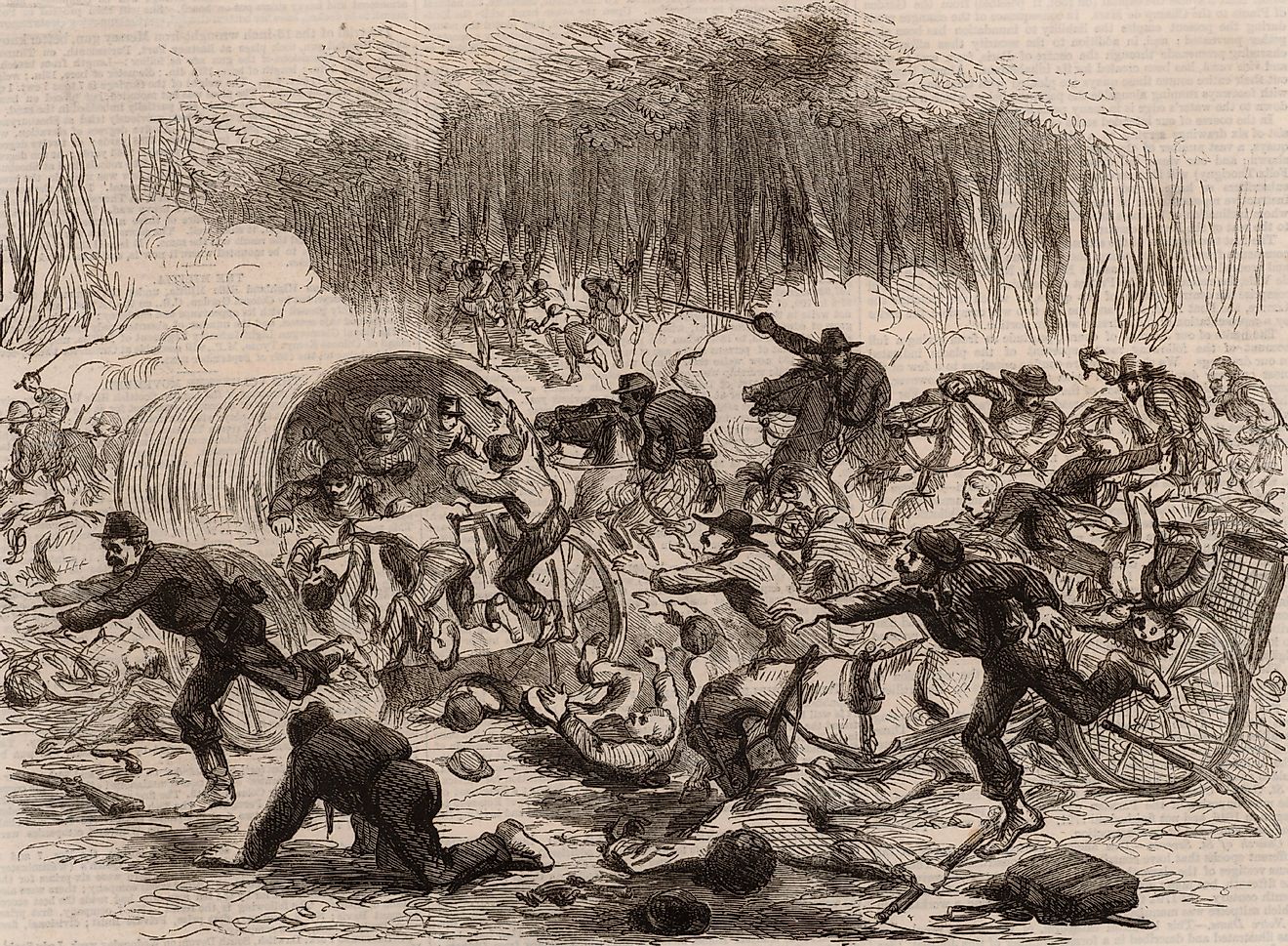First Battle of Bull Run: The American Civil War

Background
The First Battle of Bull Run was fought on July 21, 1861 in Virginia near Manassas, which lies a very short distance away from the U.S. capitol in Washington, D.C. The battle is also called “First Manassas”, and was the American Civil War's first major battle. By July of 1861, President Lincoln was being increasingly pushed to put an end to this Confederate rebellion. Brigadier General Irwin McDowell, who was then in command of Union troops comprised by thousands of volunteers in Northern Virginia, was ordered to attack nearby Confederate forces, despite the fact that his army was not fully prepared to engage in armed conflict. President Lincoln argued that the Confederate forces had even more amateur soldiers, and victory should be easy enough to come by.
Opposing Forces
The battle was fought between the United States (Union) and the Confederate States (Confederates). Brigadier General Irwin McDowell was the commanding leader of the Union Army. He was supported by Major General Robert Patterson, whose army of 18,000 men was engaging the Confederate reinforcements of Brigadier General Joseph E. Johnston to prevent them from joining the larger Confederate army of Brigadier General P.G.T. Beauregard. Beauregard was in command of a Confederate army of over 20,000 soldiers camping near Manassas Junction in Virginia. Johnston was in command of about 11,000 soldiers in the Shenandoah valley. The two sides had a total troop supply of about 35,000 soldiers each, so around 70,000 people were directly engaged.
The Battle
On July 21st, 1861, Irwin McDowell and his army commenced marching towards Bull Run, and the Union Force struck the Confederate troops near Manassas Junction. Initially, the Union army managed to push back the Confederate troops across the Warrington Turnpike and over Henry House Hill. Nonetheless, Confederate reinforcements from both Beauregard and Johnston arrived in quick order. By the afternoon, both sides had almost equal numbers of soldiers at the ready, and the two armies commenced attacks and counterattacks upon one another. The Confederates managed to advance after even more reinforcement troops arrived. The Union Army forces found themselves retreating, and they began to chaotically back-step towards Washington, D.C.
Results
The Confederates won the battle due to various reasons. Firstly, the strategy laid out by McDowell was too complicated, as it required a series of complex synchronizations for which the Union army was not trained. Secondly, the Union army had repeated delays on their march, which gave the Confederates an ample amount of time and opportunity to prepare and conduct effective scouting. Thirdly, the action plan relied on Patterson continually engaging the reinforcements of Johnston, which he failed to do. Lastly, Captain Thomas Jordan of the Confederacy was once a Union captain, and he used his connection to employ Rose Greenhow as a spy in his service. Beauregard received a secret message from Greenhow about the military movements and battle plans of McDowell, which proved particularly helpful. All in all, 460 Union soldiers were killed, 1,124 were wounded, and 1,312 were captured or missing in action. On the other side of the frontlines, 387 Confederate rebels were killed, 1,582 were wounded, and 13 went missing.
Significance and Legacy
This was the first major battle in the series of bloody confrontations that characterized the American Civil War between the Union and Confederacy. Despite their positive outcome in this early fight, the Confederate army remained very unorganized well after winning the first battle. The battle gave the Union a call to arms, and not to underestimate the seriousness of the Confederate rebellion. This resulted in the union being more vigilant, and more prepared for the subsequent battles to come. Irwin McDowell was replaced by George B. McClellan, who trained and reorganized the Union army, forming it into a more disciplined force. This eventually helped the Union in winning the overall American Civil War, although the Union would suffer another defeat at Bull Run (Manassas) in 1862. The site has been maintained by the National Park Service as the Manassas National Battlefield Park in Prince William County, Virginia since 1940.











